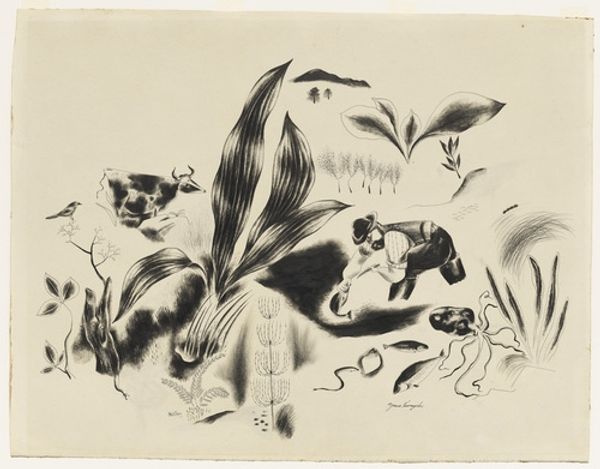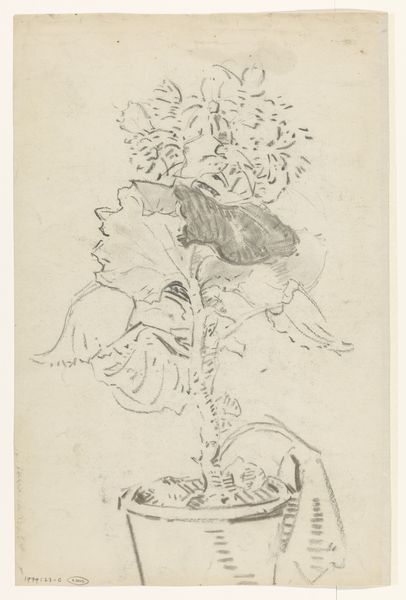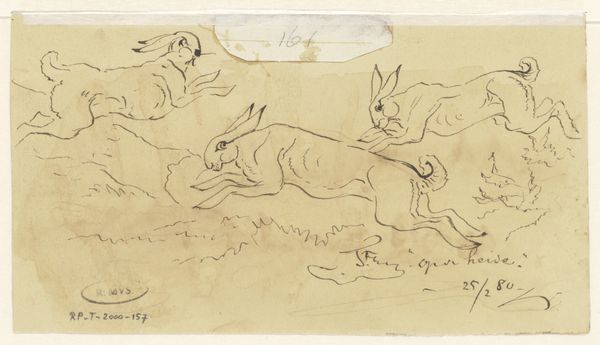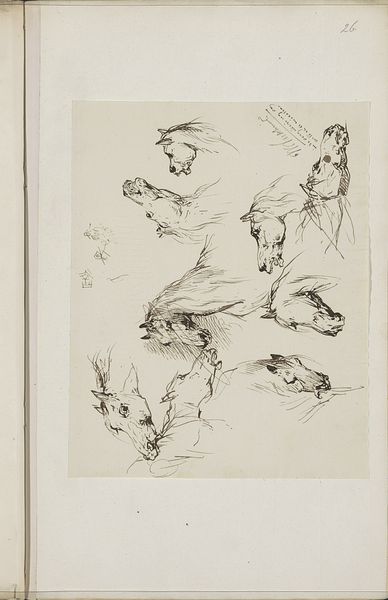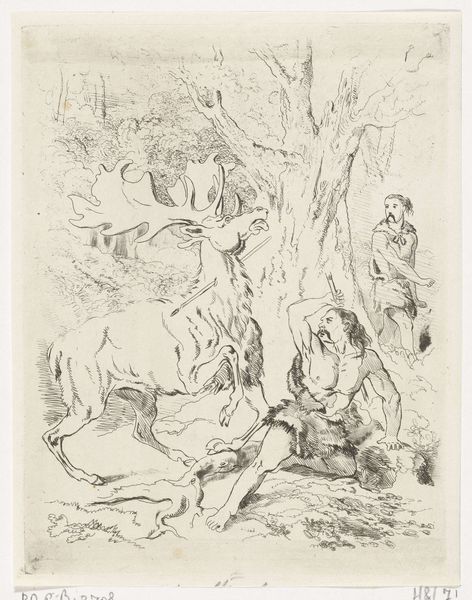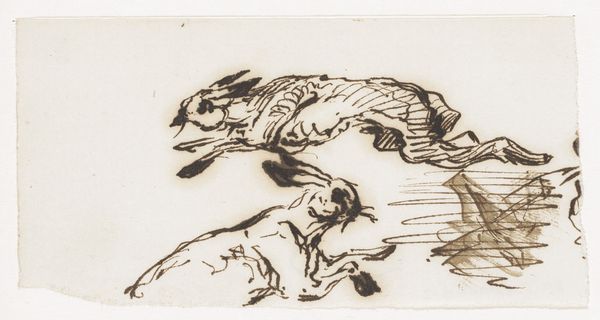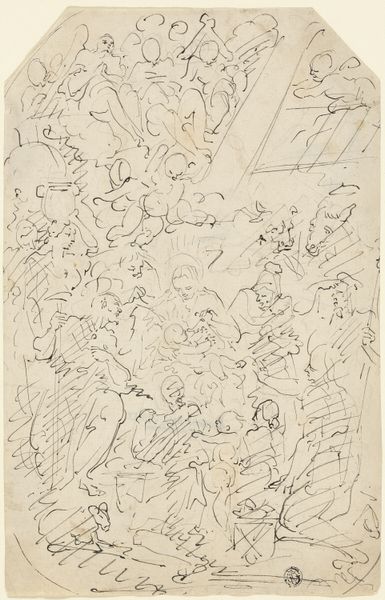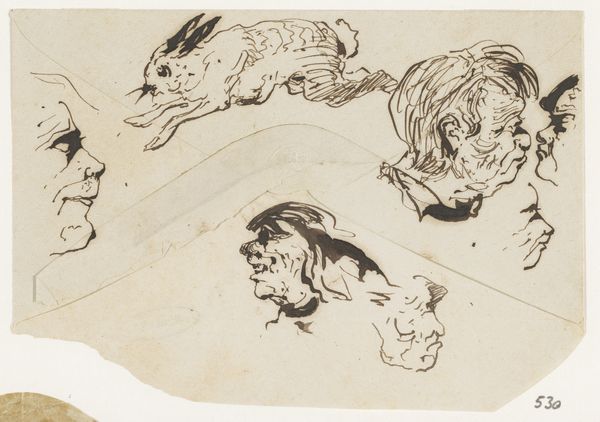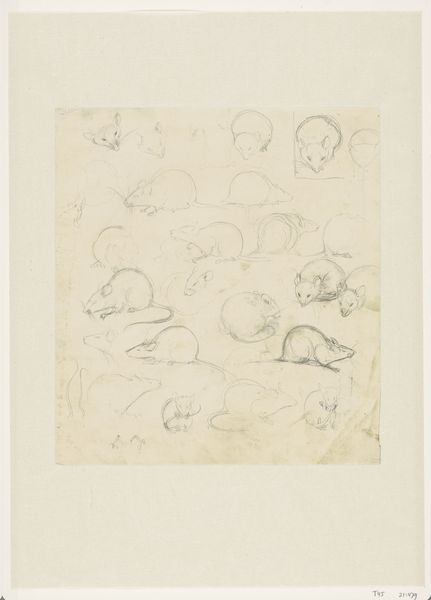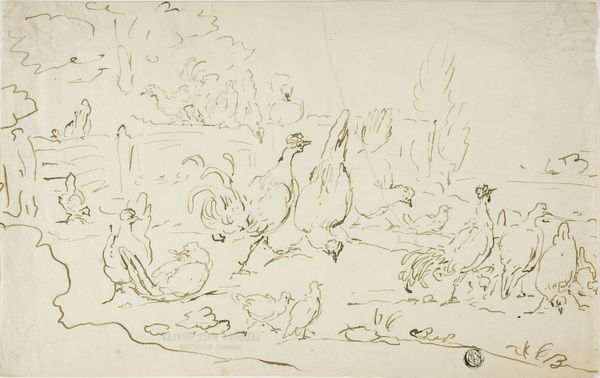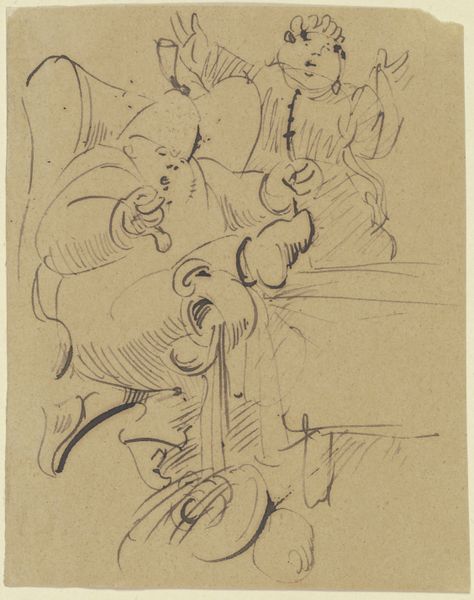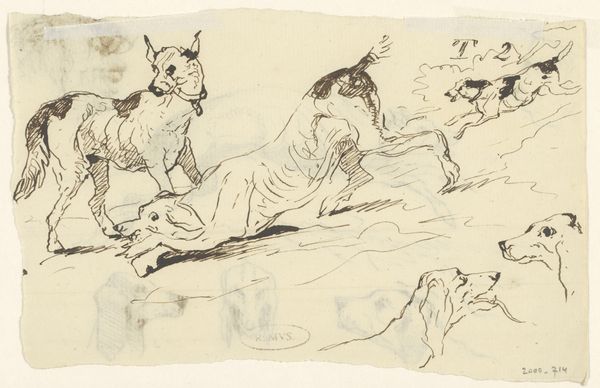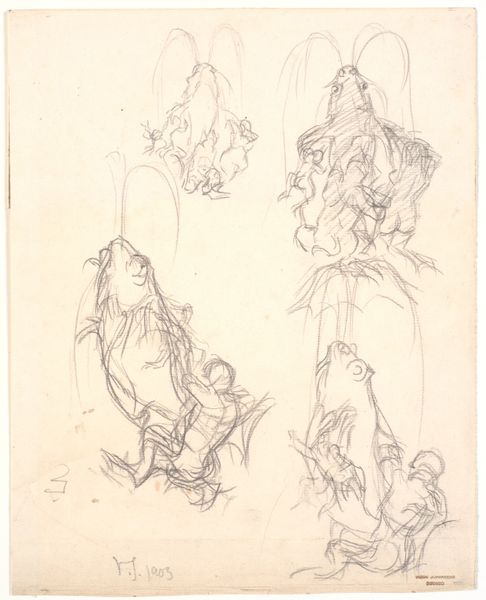
drawing, ink, pen
#
drawing
#
ink drawing
#
pen sketch
#
ink
#
sketch
#
sketchbook drawing
#
pen
#
genre-painting
#
realism
Dimensions: height 168 mm, width 106 mm
Copyright: Rijks Museum: Open Domain
Curator: Here we have "Hazen en Koppen" by Johannes Tavenraat, made between 1840 and 1880. It’s a drawing rendered in pen and ink. My first impression is its starkness and raw, almost hurried execution. What do you see? Editor: The contrast between the hares and the faces, crammed together on a single sheet, is quite striking. There’s an unsettling tension created by juxtaposing animal vulnerability with what appear to be caricatures of human faces. Curator: It makes you wonder about Tavenraat’s intention. Was he exploring the nature of perception, the line between human and animal? Sketches such as these offer a privileged glimpse into an artist’s thought process. It is intriguing how the rendering of the animals is considerably more empathetic. Editor: Yes, consider the 19th-century context, the rise of industrialization and urbanization… This piece might be commenting on the dehumanizing effects of societal changes, with these sensitively-rendered hares as a symbol of disappearing wild spaces encroached upon by the grotesque human masks above them. Curator: That interpretation resonates deeply. And within the language of visual symbols, the rabbit carries an ancient significance of fertility, nature and even magic. The artist sets the image somewhere between our perception of wilderness, animalism, and nature's symbolic, somewhat elusive side. Editor: Right, those grotesque figures remind me of Daumier's social caricatures—exaggerated features that critique those in power. Perhaps this isn't just about contrasting nature and culture, but a subtle jab at the elite who were indifferent to the plight of the working class. The hats become telling then as class symbols. Curator: A compelling intersection between the symbolic language of animal portraiture and critique of societal imbalance. Editor: Indeed. It reframes the sketch. These loose studies speak volumes about cultural anxieties of the period. Thanks to your deep knowledge of iconography, it’s unveiled its social implications in ways I didn't expect. Curator: It’s art’s endless ability to reflect and reshape our perception of ourselves and our world.
Comments
No comments
Be the first to comment and join the conversation on the ultimate creative platform.
